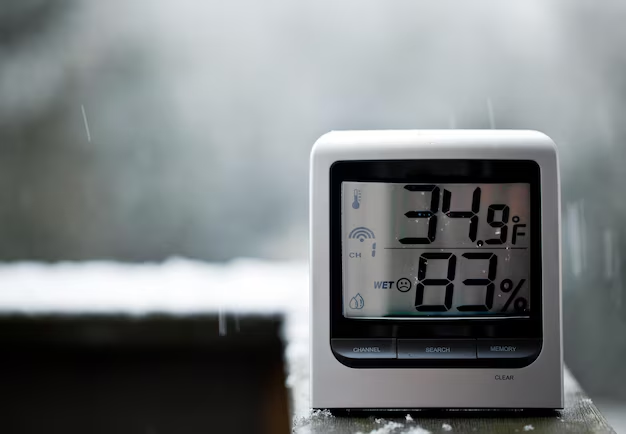What Does "High Temp" Mean on a Frigidaire Refrigerator? Understanding the Signal and Troubleshooting Tips
Have you ever opened your Frigidaire refrigerator and found a "High Temp" alert glaring back at you? This simple message can trigger a cascade of concerns, especially when it appears on a device that's supposed to keep your food perfectly chilled. Fear not—understanding what this alert signifies and how to address it is critical to maintaining your fridge's performance and extending its lifespan. Let's dive into what "High Temp" means and how you can tackle it effectively.
Understanding the "High Temp" Alert
Refrigerators are complex appliances designed to maintain optimal temperatures that keep your food safe and fresh. In the case of Frigidaire models, a "High Temp" alert is a warning sign indicating that the internal temperature has risen above acceptable levels. This alert is your refrigerator's way of saying, "Something needs attention here!"
Why the Alert Is Important
A rise in temperature could mean that perishable items like meat, dairy, and seafood might not be stored safely. If the internal temperature is too high for an extended period, bacteria can multiply, leading to food spoilage. Thus, addressing a "High Temp" alert promptly is essential to avoid foodborne illnesses and unnecessary waste.
Common Causes of "High Temp" Alerts
If you encounter the "High Temp" alert, consider these common triggers before rushing to call for repairs:
1. Frequent Door Opening
Excessive and frequent door openings can lead to a temperature rise. Every time the door is opened, warm air enters the fridge, which can cause the internal temperature to spike temporarily.
2. Overfilling
Packing your refrigerator too tightly can block air vents and restrict airflow, preventing optimal cooling. Ensuring proper spacing between items allows for adequate circulation of cold air.
3. Faulty Door Seal
A damaged or improperly sealed door gasket can allow cold air to escape and warm air to enter, leading to a rise in temperature.
4. Power Interruptions
Brief power outages or surges can disrupt the functions of your refrigerator, affecting its ability to maintain a stable temperature.
5. Thermostat Issues
A malfunctioning thermostat might not accurately control the cooling cycle, causing the temperature to rise above the set point.
6. Dirty Condenser Coils
Dust and debris on condenser coils can hinder their performance, thereby affecting the refrigerator's cooling efficiency.
Troubleshooting "High Temp" Issues
Before you panic and call a technician, here are some steps you can take to troubleshoot the issue:
Inspect the Door Seals
- Check for Gaps: Run your hand along the seal to feel for any cold air escaping.
- Clean the Seal: Use a mild detergent to remove any buildup that might prevent a good seal.
- Test with Paper: Close the door on a strip of paper; if it slides out easily, the seal might need replacement.
Evaluate Fridge Organization
- Rearrange Items: Make sure nothing is blocking the air vents.
- Moderate Contents: Avoid overloading the refrigerator to enable proper airflow.
- Check Food Containers: Ensure all containers are tightly sealed to maintain consistent temperatures.
Check for Power and Settings
- Reset Settings: Make sure your refrigerator is set to the manufacturer's recommended temperature settings.
- Examine Power Supply: Check if there have been recent power outages and ensure that the appliance is plugged in securely.
Clean the Condenser Coils
- Locate Coils: Usually found at the back or underneath the refrigerator.
- Unplug Unit: Ensure safety by turning off and unplugging the refrigerator.
- Use a Vacuum: Remove dust and dirt using a vacuum cleaner with a brush attachment.
When to Call a Professional
Sometimes, a "High Temp" alert requires more than DIY fixes. Here are scenarios when professional intervention is advised:
- Persistent Alerts: If you've tried troubleshooting without results, there might be an underlying issue.
- Thermostat Problems: Complex electronics or thermostat malfunctions usually require expert repair.
- Mechanical Failures: Faulty fans or compressors are not typically user-fixable and should be addressed by a technician.
Key Takeaways and Consumer Tips
To help you manage your Frigidaire refrigerator effectively, consider the following practical tips:
- 💡 Regular Maintenance: Schedule annual maintenance checks to keep all components in good working order.
- 🌬️ Allow for Air Circulation: Rearrange interior contents for optimal airflow.
- 🧰 Be Proactive: Address alerts and issues swiftly to prolong appliance life and ensure food safety.
Summary Table: Quick Tips for Handling "High Temp" Alerts
| Problem | Quick Fix | Pro Tip |
|---|---|---|
| Frequent Door Openings | Minimize opening frequency | Make a list before accessing the fridge to save time. |
| Overloading | Reorganize and remove unnecessary items | Leave space for air circulation for effective cooling. |
| Door Seal Issues | Inspect and clean seals; replace if necessary | Regularly perform the paper strip test for a good seal. |
| Power Interruptions | Reset temperature controls | Use a surge protector for stable power supply. |
| Dirty Coils | Vacuum condenser coils regularly | Schedule regular cleaning to prevent dust buildup. |
By understanding the "High Temp" alert and taking proactive steps, you can ensure your Frigidaire refrigerator maintains its essential function of keeping food safe and fresh. Whether it's straightforward home maintenance or professional help, these guidelines provide a roadmap to tackling this common issue.
